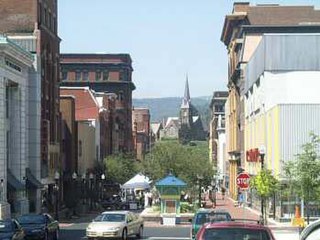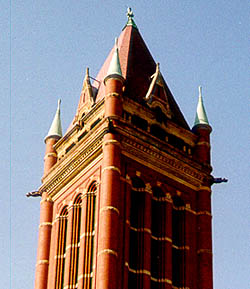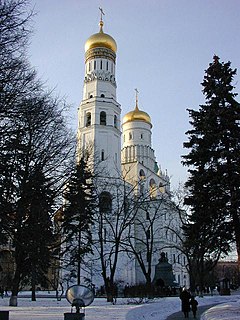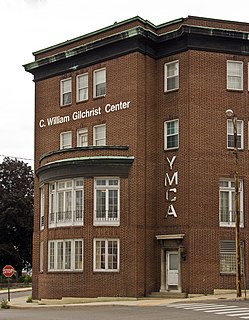
The Cumberland YMCA building is a three-story wedge-shaped brick structure with a partially raised basement, built in 1925 in the Classical Revival style, located in Cumberland, Maryland, United States. It is an excellent example of institutional architecture of its time. At the time of its construction, it offered the only indoor swimming pool in the area.
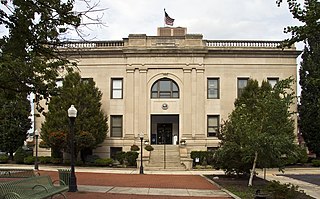
Cumberland City Hall is a historic city hall in Cumberland, Allegany County, Maryland, United States. It was built between 1911 and 1912 and replaced the Cumberland, Maryland City Hall & Academy of Music. It is a 7-by-7-bay, two-story, stone-faced, neo-classical structure. It features an irregular corner, into which the architect has recessed a curving bay; the upper window in this curving bay has been filled with glass block. A mural by artist Gertrude du Brau on the interior of the rotunda dome depicts the early history of the city, including representations of General Edward Braddock and of George Washington.

16 Altamont Terrace is a historic home in Cumberland, Allegany County, Maryland, United States. Built circa 1851, it is an example of Greek Revival architecture, with an Ionic portico above a stone foundation and cast iron balconies. The house served as the Allegany County hospital from 1889 to 1890. The building was converted into apartments in about 1905.
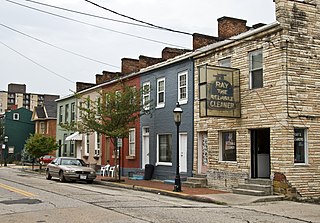
200, 202, 204, 206 and 208 Decatur Street are adjoining rowhouses in Cumberland, Allegany County, Maryland. The houses were built in the 1840s or early 1850s. The houses are of a type that, while common elsewhere in Maryland, were not extensively built in Cumberland., in which individual and semi-detached houses were more common. The houses exhibit plain but consistent detailing of a neoclassical nature.

George Truog House is a historic home in Cumberland, Allegany County, Maryland, United States. It is a 3-story brick structure built in 1903. The house was designed by local architect Wright Butler, and built by George Truog, proprietor of the Maryland Glass Etching Works in Cumberland from 1893-1911. It contains a unique collection of decorative glass.
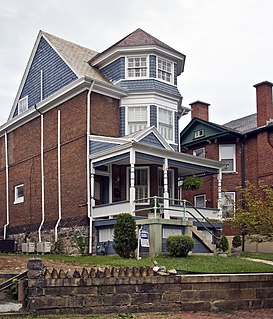
Wright Butler House is a historic home in Cumberland, Allegany County, Maryland, United States. It is a 2 1⁄2-story, Queen Anne-style suburban one-unit dwelling built about 1896. The house was the home of Wright Butler (1868–1932), one of Cumberland's leading architects at the turn of the 20th century. He also designed the George Truog House.

Town Clock Church is a historic church in Cumberland, Allegany County, Maryland, United States. It is a one-story gable-front brick building built in 1848 by its German Lutheran congregation. A tall clock tower rises from the slate roof above the principal facade.

The Canada Hose Company Building is a historic firehouse in Cumberland, Allegany County, Maryland, United States. It is a two-story gable-front brick structure. Above the doors used for the fire engines is a sign which reads "Cumberland Hose Co. No. 1." The building is the oldest of a number of old firehouses built in Cumberland during the 19th century; it was completed in 1845.

Public Safety Building, or Old Post Office, is a historic building in Cumberland, Allegany County, Maryland. It was constructed between 1902 and 1904, in the Classical Revival style. It is built of brick, rising from a monumental stone base. There is a slightly projecting pavilion with four engaged Ionic columns on the second and third floors. The building was built originally as the United States Courthouse and Post Office during the tenure of James Knox Taylor (1857-1929), who was Supervising Architect for the U.S. Treasury. It served as a courthouse of the United States District Court for the District of Maryland from 1904 to 1933. It is considered to be typical of buildings constructed during Taylor's tenure to the specifications of the Tarsney Act, which required competition in the design of federal buildings.

Cumberland station is a historic railway station in Cumberland, Allegany County, Maryland. It was built in 1913 as a stop for the Western Maryland Railway (WM). The building was operated as a passenger station until the WM ended service in 1959, and it continued to be used by the railway until 1976. It was subsequently restored and currently serves as a museum and offices, as well as the operating base for a heritage railway.
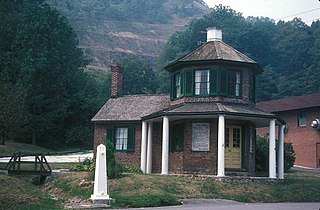
La Vale Tollgate House is a historic toll house in La Vale, Allegany County, Maryland, United States. It is a two-story brick structure built in 1835-1836, with seven sides—a basic polygon plan. A one-story Tuscan-columned porch extends around the five outer sides of the polygonal portion. On top is a non-functional reconstructed cupola. The building served as a toll house on the Cumberland or National Road and was the first such structure to be erected.

Barton Village Site, also known as the Herman Barton Indian Village Archeological Site, is an archaeological site near Cumberland in Allegany County, Maryland. The site was explored in 1960 by Henry Wright, whose work revealed six cultural layers representing three phases of late prehistoric occupation, c. 1000-1500. It represents data for the terminal Woodland to the terminal Prehistoric periods in the Upper Potomac River Valley. Significant evidence exists that the site was a village of the Monongahela culture.

The Chapel Hill Historic District is a national historic district in Cumberland, Allegany County, Maryland. It is a mixed-use historic district of 810 contributing resources on 145 acres (0.59 km2) located on the southeast side of Cumberland. It contains a mix of residential, commercial, and institutional buildings, with St. Mary's Roman Catholic Church on the highest point. The vast majority of the buildings were built between 1900 and 1910, and includes an extraordinary collection of double houses built for the industrial working class of the city.

The Decatur Heights Historic District is a national historic district in Cumberland, Allegany County, Maryland. It is a mixed-use district of 77 acres (310,000 m2) located on the northeast side of Cumberland. It contains a total of 377 residential / commercial / industrial historic resources, including five properties previously listed on the National Register of Historic Places. Approximately 50 percent of the resources in the district predate 1890, approximately 40 percent date were constructed between 1890 and 1930, and the remaining approximately 10 percent post-date 1930. It is significant because: 1) its association with the history of African-American education in Cumberland; 2) its association with the exploration and settlement of the region, with its location along the National Road; and 3) the dense concentration of primarily residential buildings built between about 1820 and the 1940s.

The Greene Street Historic District is a national historic district in Cumberland, Allegany County, Maryland. It is a 7-acre (28,000 m2) linear historic district along both sides of Greene Street on the west side of Cumberland. It contains 45 buildings, 37 of which are residential and 8 of which exhibit commercial design characteristics. The earliest buildings in the district are built in the Federal style, followed by buildings erected in the Greek Revival, Italianate, Queen Anne, and Colonial Revival styles. The earliest of the district's resources was constructed about 1820, with the most recent built about 1930.

The Washington Street Historic District is a national historic district in Cumberland, Allegany County, Maryland. It is an approximately 35-acre (140,000 m2) residential area to the west of downtown Cumberland and consists primarily of six blocks of Washington Street. It contains large-scale 19th- and 20th-century houses representing most of the major architectural styles, including examples of Greek Revival, Italianate, Gothic, Queen Anne, Romanesque, Colonial Revival, and bungalow. Also included in the district are the 1890s Romanesque courthouse, the 1850s Greek Revival academy building, and the Algonquin Hotel.
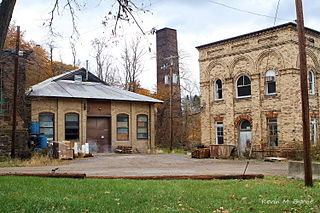
The Mount Savage Historic District is a national historic district in Mount Savage, Allegany County, Maryland. It comprises 189 19th and 20th century buildings, structures, and sites within this industrial community northwest of Cumberland. The structures reflect the community's development as a center of the iron, coal, brick, and railroad industries from the 1830s to the early 20th century. Included are a set of vertical-board duplexes on Old Row built about 1840, and possibly the earliest examples of workers' housing remaining in the region.

The Inns on the National Road is a national historic district near Cumberland, Allegany County, Maryland. It originally consisted of 11 Maryland inns on the National Road and located in Allegany and Garrett counties. Those that remain stand as the physical remains of the almost-legendary hospitality offered on this well-traveled route to the west.

Rolling Mill Historic District is a national historic district located at Cumberland, Allegany County, Maryland. It is a 38-acre (15 ha) primarily residential historic district located on the east side of the city of Cumberland. It contains a strong, locally distinctive concentration of wood and brick residences built between the early 1870s and the late 1940s. It also includes a modest commercial area. The district has a total of 173 properties, including the previously listed Francis Haley House.

Klots Throwing Company Mill is a historic silk mill located at Cumberland in Allegany County, Maryland, United States. It was built in 1902-1903, and is a long two-story brick building with double-gable roofs and paired stepped parapets. An addition was built in 1909. It was operated by Gentex Corporation and closed in 1972. The building was subsequently used for storage. From 1988 until 2002, the north end of the building housed the Western Maryland Food Bank. The building will be converted to loft apartments.

